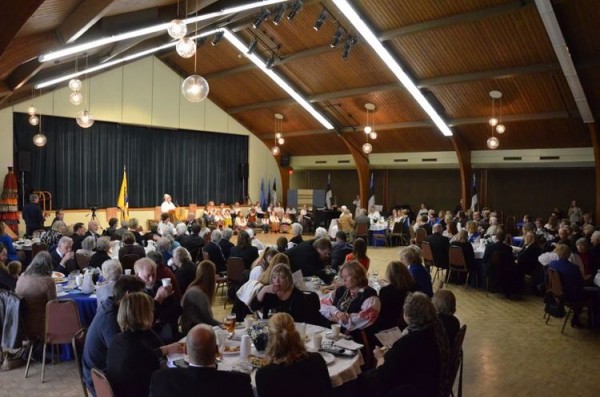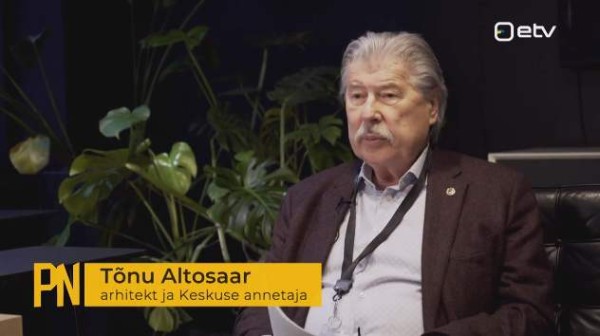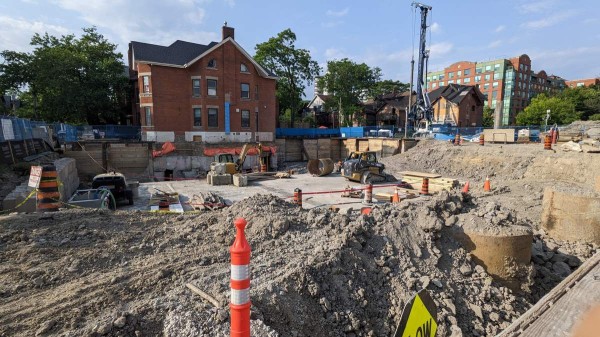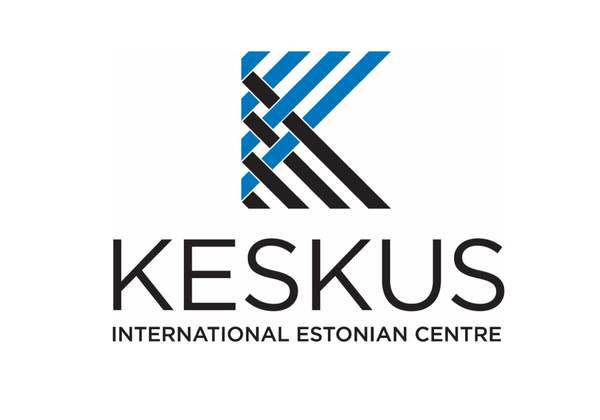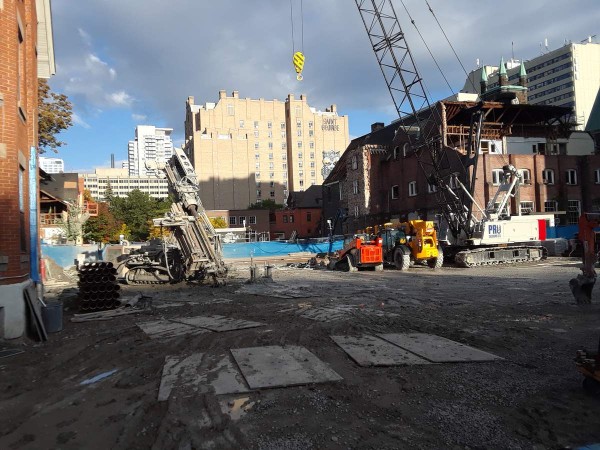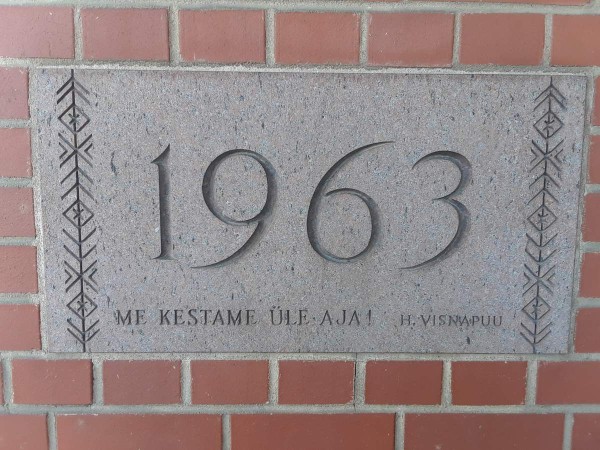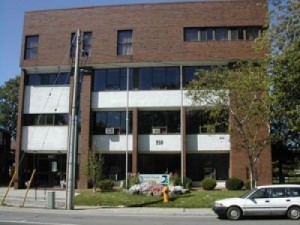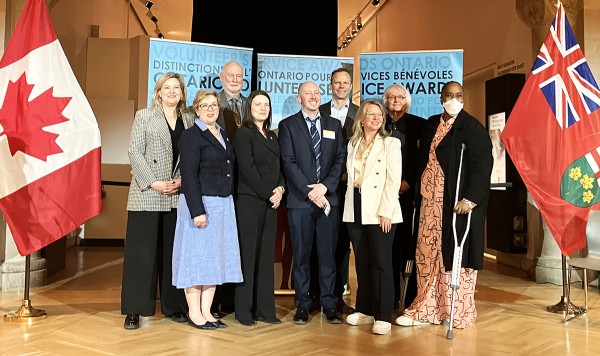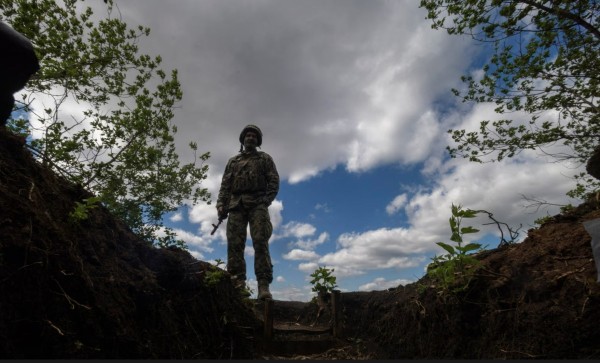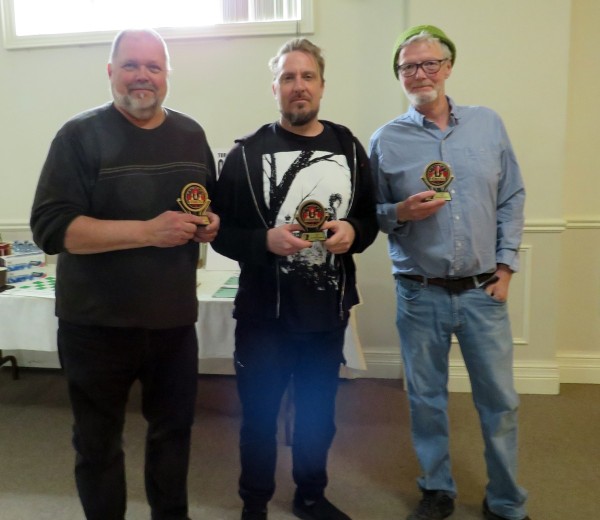
Heritage Matters: Toronto Estonian House and Heritage in Toronto Estonian Life (1)
Toronto Eesti Maja tulevik | 11 Nov 2017 | EL (Estonian Life)Eesti Elu
Alja Pirosok
It is a cautiously exciting time for heritage in Toronto. A role for cultural communities such as Estonians, who know best the architectural and cultural histories of their heritage buildings and communities, is strongly encouraged in the making of a city-wide heritage inventory.
On Nov. 2 Heritage Toronto and Ontario Heritage Trust co-hosted “Heritage in Toronto: A Public Conversation”. A panel of experts and influencers set the stage for understanding how and why heritage is becoming a priority. Speakers included city heritage specialists, planners, and developers. In the face of the pressures of population growth and massive intensification of building, all sought a wider involvement of government, individuals and communities in preserving the heritage of the city for the future. Founding principal of ERA architects, Michael McClelland, was a key spokesperson for the importance of a city-wide inventory.
McClelland’s book, Concrete Toronto, is known to Estonians who attended the recent Architectural Symposium at Tartu College, which launched an exhibit of postwar Estonian architecture in Toronto. McClelland’s colleague and co-author, Graeme Stewart, was among the presenters.
At “Heritage in Toronto: A Public Conversation” Michael McClelland spoke specifically to the issue of gentrifying downtown Toronto, at the expense of other parts of the city. He also spoke to the need to recognize the contributions incoming cultural communities have made to the architecture and vitality of the city, city-wide. The need for tools to gather knowledge is pressing, as valuable buildings and heritage sites are vulnerable under pressure to be demolished. Estonian House would be an example.
Toronto Estonian House and the Estonian Centre Project Proposal
Ironically, a requisite Community Consultation Meeting on Oct. 30 at Tartu College regarding the proposed new Estonian Centre on Madison Avenue illustrated a problem that the Toronto city-wide inventory is intended to remedy. A member of the Annex Residents’ Association asked whether the new Estonian project had secured funding. She was aware a lack of funds had shut down an earlier proposal. She was also interested in where the new VEMU building would be located. At the same time she and other neighbourhood residents were delighted by the low-rise two-storey scale of the new proposal.
Architect Alar Kongats’s first slide depicted a high-rise marked with an “X”. He noted, too, that the project would restore and preserve as fully functional the heritage building at 11 Madison, not just a facade. Madison Avenue is the newest Heritage Conservation District in the Annex.
Facadism and adaptive reuse are contrasting approaches to heritage preservation. Adaptive reuse is a preferred alternative to demolition from the perspectives of waste reduction and heritage preservation.
To the question about funding, project manager Dave Kalm replied that it was coming from the sale of another “asset”, a.k.a. Estonian House. Dave Kalm was also project consultant for previous failed developer projects at Estonian House. But if Estonian House is sold to a developer, the developer’s interest will be to secure a rezoning for a high-rise on Broadview Avenue. Yet a Broadview Avenue “Avenue Study” with community input made it well known they wanted only low-rise buildings in the vicinity.
Estonian House on Broadview Avenue was included in the Q & A about the proposal for a new Estonian Centre on Madison Avenue, as the “asset” to be sold to fund the project, but the “asset” was unnamed. No questions followed about the functioning of Estonian House and its value both to the Estonian community and to the architectural and cultural heritage of Toronto. The discussion was also silent about the adequacy of the funding from the sale of Estonian House to cover the cost of the new project, the environmental impact of a developer’s project on the Don Valley ravine, and the community impact of possible bankruptcy.
Toronto Estonian House and Cultural Heritage
At “Heritage in Toronto: A Public Conversation” Mary MacDonald, Senior Manager of Heritage Preservation Services for Toronto City Planning, spoke of the “trauma” communities may experience in the event of the loss of a significant historic and cultural site. There is evidence the Estonian community is already suffering. There is also a desire on the part of city planners and heritage specialists to hear from communities. In the case of the ethnic communities to which Michael McClelland made reference, translation may be needed to ensure that differing points of view are accessed.
The Estonian community is, like other cultural communities, not homogeneous, and the circumstances of the proposed transfer of economic and political power from one “centre” that would disappear to another that is expanding, need to be understood. What is it for? The notice of the Estonian Centre Community Consultation Meeting Oct. 30 described the proposed new Estonian Centre at Tartu College as “a non-profit community centre and events venue”. That, on its website and social media, is the description of Estonian House.
Estonian House shareholders were asked to agree, or not, to a due diligence process of investigation into the sale of Estonian House to support the new project on Madison Avenue, and to the dissolution of the shareholders’ decision-making power over what happens to everything that currently belongs to and functions within the Estonian House non-profit community centre and events venue. The results of the vote in April very narrowly met the 2/3 of votes requirement, with bloc voting that has itself been a topic of controversy.
A comprehensive series of analyses of significant aspects of the relationship of Toronto Estonian House and the new proposed project at Tartu College, as well as the architectural, historical and cultural heritage and community development of Estonian House, has appeared in the media in Estonian. The first article, “Thoughts on Estonian House and the new project” has been translated into English for Estonian Life and Estonian World Review. Translating in general needs to be encouraged among those in the Toronto Estonian community who are potentially capable and interested. The translation of the complete Estonian House series by Eda Sepp, art historian and co-founder of the Women’s Studies and Resource Centre in Tallinn, might be an excellent place to set a course, for the benefit of Toronto Estonian House and heritage in Toronto.
Viimased kommentaarid
Kommentaarid on kirjutatud EWR lugejate poolt. Nende sisu ei pruugi ühtida EWR toimetuse seisukohtadega.
"We wind up asking, What do we want to keep?" Ms. MacDonald says. "And the larger question, a very different question, is, what matters to people? What are the landmarks for different faith communities, for different waves of immigration? Not everyone in Toronto has the same history. We believe that the city's architectural heritage represents community and social value as well."
https://www.theglobeandmail.co...
Nov. 18, 2017
https://www.theglobeandmail.co...
Nov. 18, 2017
Toronto Eesti Maja tulevik
TRENDING






